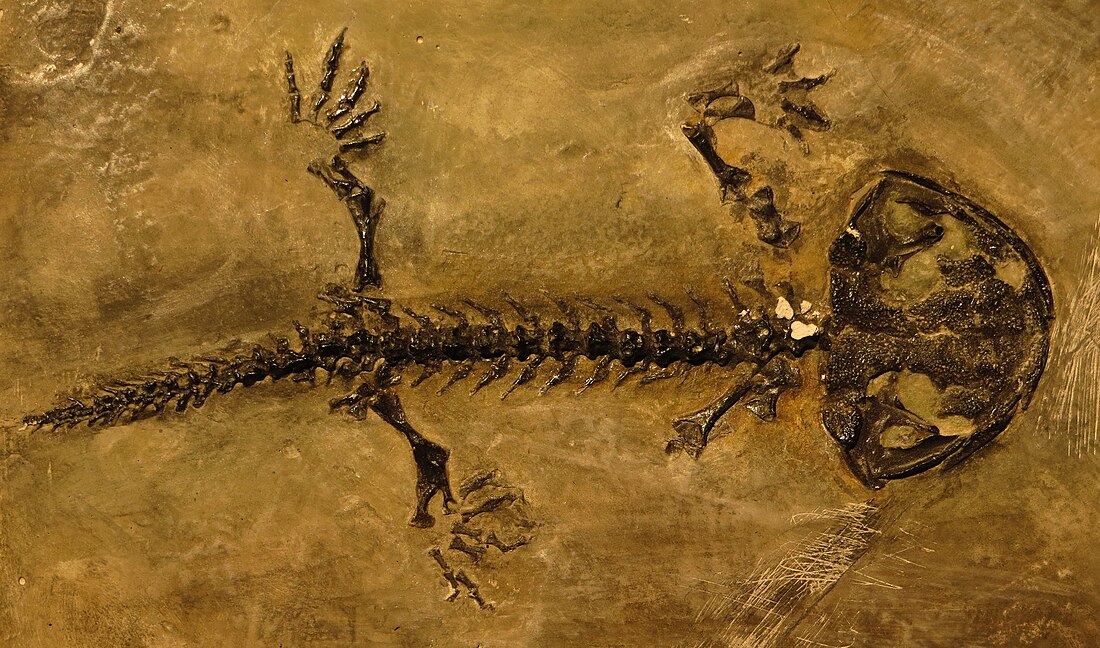Top Qs
Timeline
Chat
Perspective
Karabastau Formation
Geologic formation in Kazakhstan From Wikipedia, the free encyclopedia
Remove ads
The Karabastau Formation (Kazakh: Qarabastaý svıtasy) is a geological formation and lagerstätte in the Karatau Mountains of southern Kazakhstan whose strata date to the Middle to Late Jurassic. It is an important locality for insect fossils that has been studied since the early 20th century, alongside the rarer remains of vertebrates, including pterosaurs, salamanders, lizards and crocodiles.[1][2]
Remove ads
Lithology and depositional environment

The primary lithology consists of 1 mm thick varve laminations of claystone, with a dark part and a light dolomitic part, which probably correspond to a wet and dry season respectively, alongside rare, several cm thick sandstone interbeds. These were deposited within an ancient freshwater paleolake, that given the number of laminations has been suggested to have existed for over 150,000 years. The top of the formation shows the laminations becoming wavy, likely as a result of microbial interactions, and the top of the formation is capped by a conglomerate predominantly composed of black Carboniferous limestone pebbles.[2]
Remove ads
History of discovery
The Karabastau Formation was first discovered in 1921 by Soviet geologists, and was declared a protected paleontological reserve in 1924.[2]
Paleofauna
Vertebrates
Invertebrates
Hundreds of species of insects are known from several localities within the formation, primarily Karatau-Mikhailovka[4][5][6][7][8][9][10][11][12][13]
Flora
See also
References
Wikiwand - on
Seamless Wikipedia browsing. On steroids.
Remove ads



